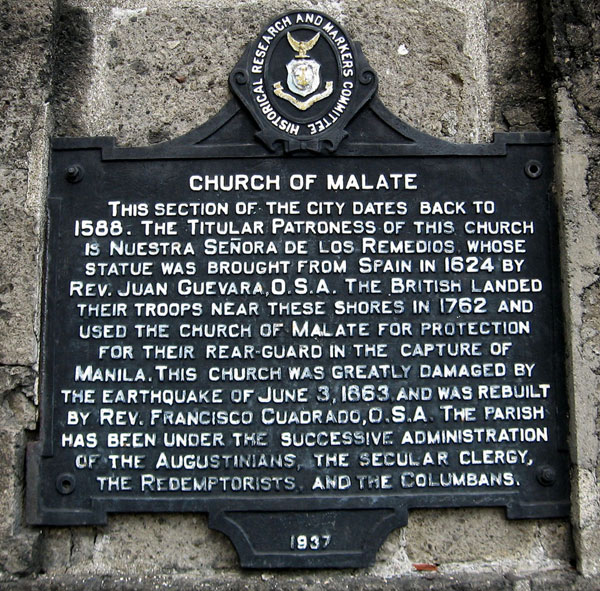Columbans In The Philippines: The Beginnings
The author, from Northern Ireland, has been in the Philippines since 1960 and in recent years has been working in Malate Parish, Manila. He spent many years in Mindanao, much of that time in parishes in Lanao del Norte and Lanao del Sur.

30 May 1929 is an historic date for Columbans in the Philippines. On that day Fr Michael Cuddigan, who had sailed from Sydney, disembarked in Manila Harbour and made his way to Our Lady of Remedies Church, Malate. He was not the first Columban to visit Manila; several others had made it a port of call in the 1920s en route to and from China, but he was the first in a long line of Columbans who, over the next 80 years, would make the Philippines their home.
The following day, 31 May, a second Irish Columban, Fr Patrick Kelly, arrived. He had sailed from Ireland via Genoa, was met by Father Cuddigan at the pier and escorted to Malate, a short distance south along Manila Bay. The Columbans had been founded in 1918 to work in China so it was only after protracted negotiations between Rome and the Archbishop of Manila that the Society leadership had agreed to send a few men to staff Malate. As a result of overwork and TB Fr Michael Cuddigan collapsed and eventually returned to Australia where he spent the rest of his missionary life. He died at the age of 84.
1898 marked the end of nearly 400 years of Spanish rule in the Philippines. The Spanish priests were deported and the Iglesia Filipina Independiente, a Filipino nationalist church popularly known as the Aglipayans, after their first head, Fr Gregorio Aglipay, gained strength and broke with Rome. Catholics were left leaderless and their traditions were rarely respected by the American Protestant missionaries and school teachers who poured into the country. The Philippine Catholic Church cried to the world for help.
Redemptorists from Ireland, who had come to Cebu in 1905, were requested by the Irish-born Archbishop of Manila, Michael O’Doherty, to accept the parish of Malate. In 1912, they signed a contract to work there for seven years but as time went by were persuaded by the Archbishop to extend their stay for a further ten years. Australian Redemptorist, Fr Dennis Grogan CSsR, graciously stayed on in Malate for a few months to introduce the two Columbans into Manila parish life.
In letters to their superiors and members of their own family the new priests described their early experiences. Excerpts give us a flavor of parish life 80 years ago. On 25 September 1929, Father Cuddigan wrote: ‘The parish is well organized and speaks well for the efforts of the Redemptorists. When they came they found a deserted church and after years of hard work brought the people to a very devout stage in the practice of their religion. The love they have for the “Virgen” is simply wonderful.’
In a letter to his sister the following year, Father Kelly described ‘the grand old customs from Spanish times. Malate is a very popular shrine of our Lady of Remedies. On Fiesta Day many beautiful statues are brought in procession on specially decorated carriages lit up with electricity. Last of all is Our Lady of Remedies on a carriage covered with old Mexican silver. As the evening was dark the whole thing looked very beautiful, thousands marching in the procession, with music from seven bands. It is all so different from the quiet manifestation of faith in Ireland . . .’
Malate church was established by the Augustinians in 1588, only 23 years after the imposition of Spanish rule and the official beginning of Christianity in the country. A statue of the patroness, Our Lady of Remedies (Healing), was brought from Spain in 1624 and installed behind the main altar. Father Cuddigan writes, ‘The Shrine of Nuestra Señora de los Remedios is the great attraction. Each Saturday is a day of pilgrimage. Hundreds arrive from the back of the mountains across the bay. Their parked bancas (boats) make things hum on Malate Beach. I’m sure 500 children come along in arms to be blessed at Our Lady’s Shrine.’ He then describes how the priest would stand inside the altar rails and sprinkle the children and the parents with Holy Water as he moved along.
This custom has endured until today although devotees come now on jeepneys and on foot. Children are still brought for a blessing on Saturday mornings.
In the years that followed, the Society leadership undertook the staffing of several inland parishes outside the city. In 1938, a large group came and was assigned to Northern Mindanao. After WW2 and the expulsion of priests from China the Society took on more territories: southern Negros Occidental in 1950 and Zambales in 1951. By the mid 1970s the total number of Columbans stationed in the Philippines had reached 253. Since then, because of the acceptance of mission assignments in other parts of the world, and because of aging and deaths, our numbers have been drastically reduced. The work of building up the local Church has been accomplished. How Columban missionaries contributed in this great work is a story of grace and blessings.
You may email Father McHugh at kaymac@eastern.com.ph or write him at Our Lady of Remedies Parish, 2000 M.N. Del Pilar St, Malate, 1004 MANILA
